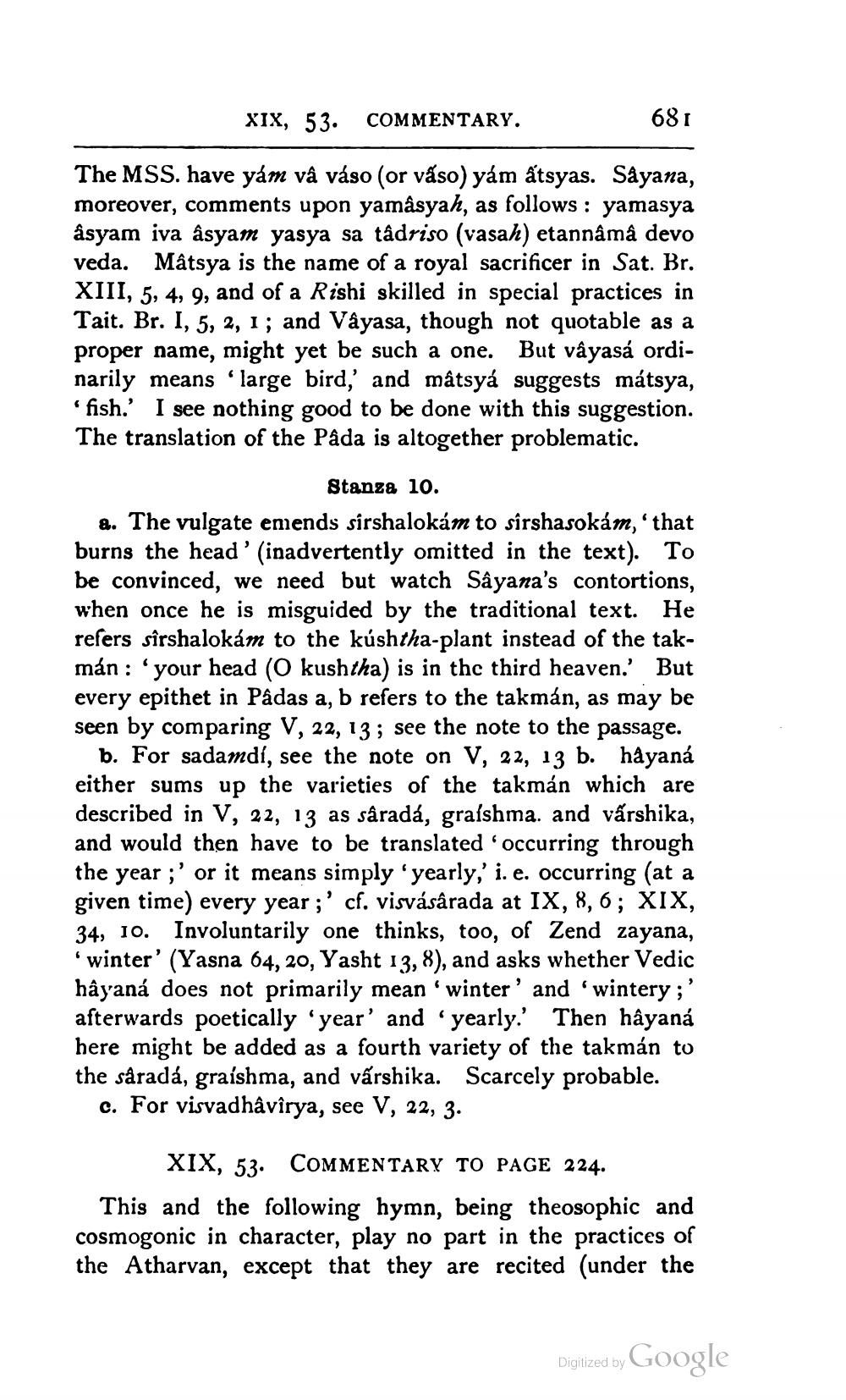________________
XIX, 53. COMMENTARY.
681
The MSS. have yám vâ váso (or vaso) yám átsyas. Såyana, moreover, comments upon yamasyah, as follows: yamasya åsyam iva âsyam yasya sa tâdriso (vasah) etannâmâ devo veda. Mâtsya is the name of a royal sacrificer in Sat. Br. XIII, 5, 4, 9, and of a Rishi skilled in special practices in Tait. Br. I, 5, 2, 1; and Vayasa, though not quotable as a proper name, might yet be such a one. But vâyasá ordinarily means 'large bird,' and mâtsya suggests mátsya, 'fish.' I see nothing good to be done with this suggestion. The translation of the Pâda is altogether problematic.
Stanza 10.
8. The vulgate emends sirshalokám to sîrshasokám,'that burns the head' inadvertently omitted in the text). To be convinced, we need but watch Sâyana's contortions, when once he is misguided by the traditional text. He refers sîrshalokám to the kushtha-plant instead of the takmán: 'your head (O kushtha) is in the third heaven.' But every epithet in Pâdas a, b refers to the takmán, as may be seen by comparing V, 22, 13 ; see the note to the passage.
b. For sadamdí, see the note on V, 22, 13 b. hayana either sums up the varieties of the takmán which are described in V, 22, 13 as sârada, gralshma. and vấrshika, and would then have to be translated 'occurring through the year ;' or it means simply 'yearly,' i. e. occurring (at a given time) every year ;' cf. visvásârada at IX, 8, 6; XIX, 34, 10. Involuntarily one thinks, too, of Zend zayana, 'winter' (Yasna 64, 20, Yasht 13,8), and asks whether Vedic hâyaná does not primarily mean winter' and 'wintery;' afterwards poetically 'year' and 'yearly.' Then hâyaná here might be added as a fourth variety of the takmán to the såradá, graíshma, and vấrshika. Scarcely probable.
c. For visvadhâvîrya, see V, 22, 3.
XIX, 53. COMMENTARY TO PAGE 224. This and the following hymn, being theosophic and cosmogonic in character, play no part in the practices of the Atharvan, except that they are recited (under the
Digized by Google




